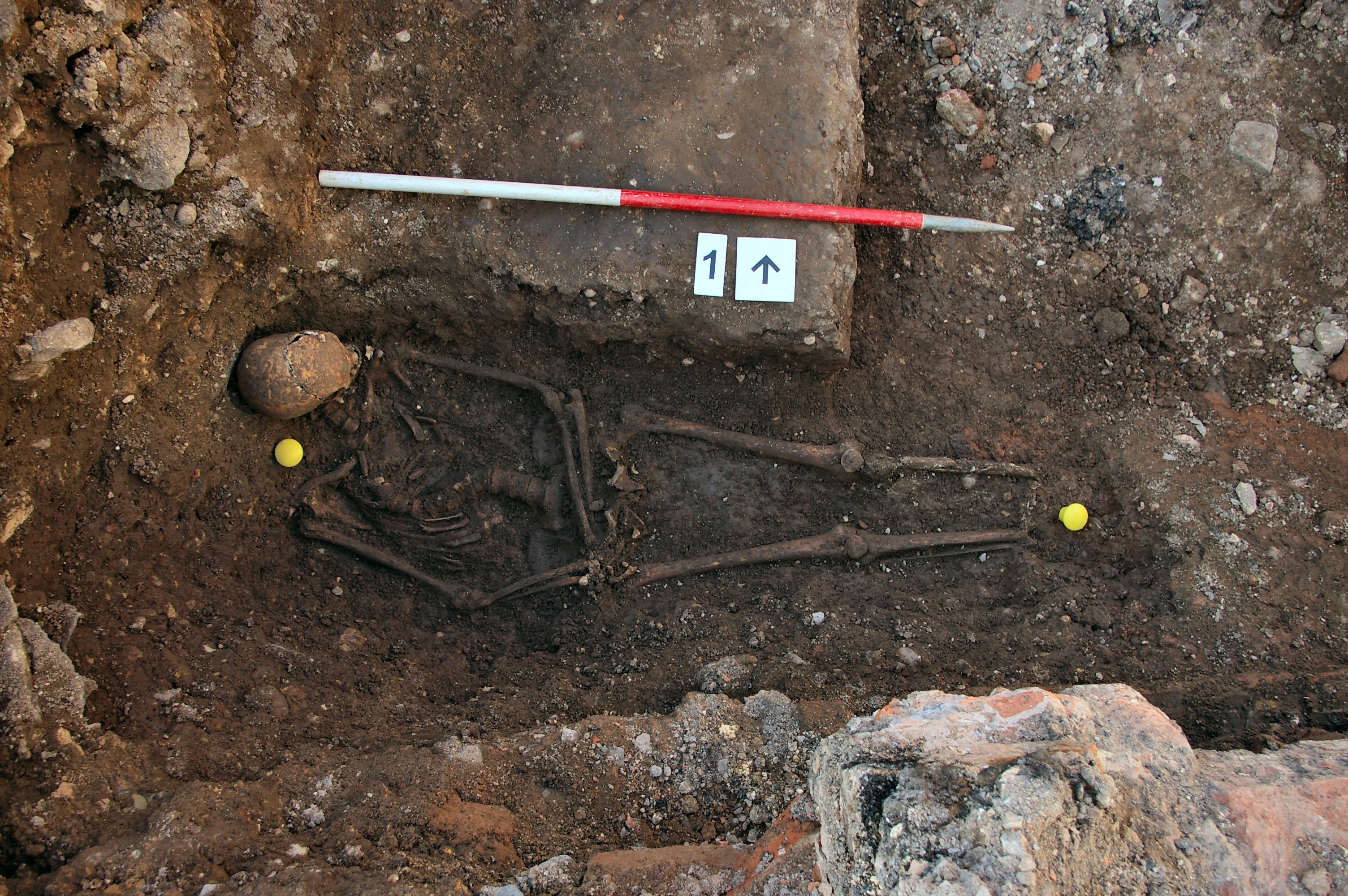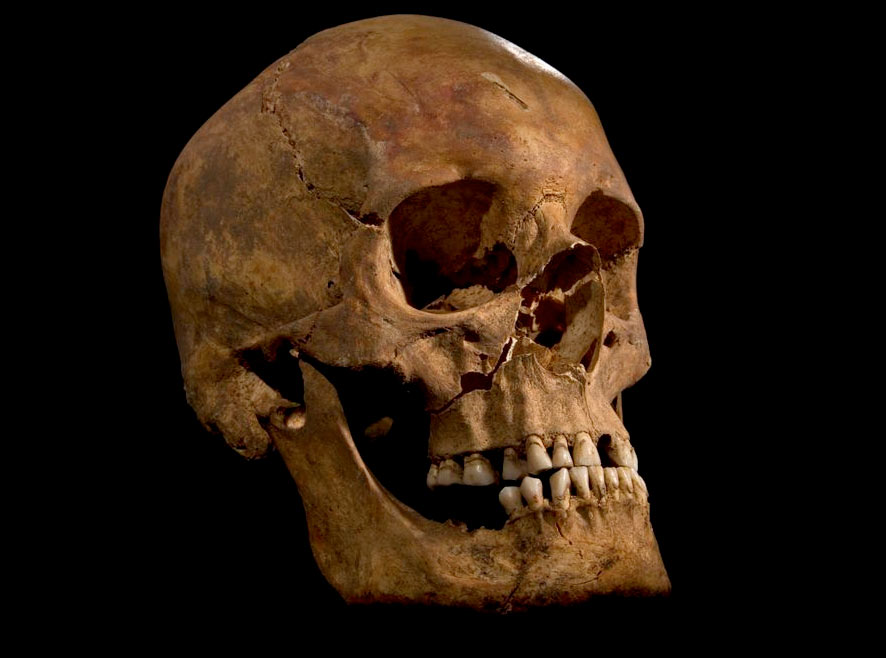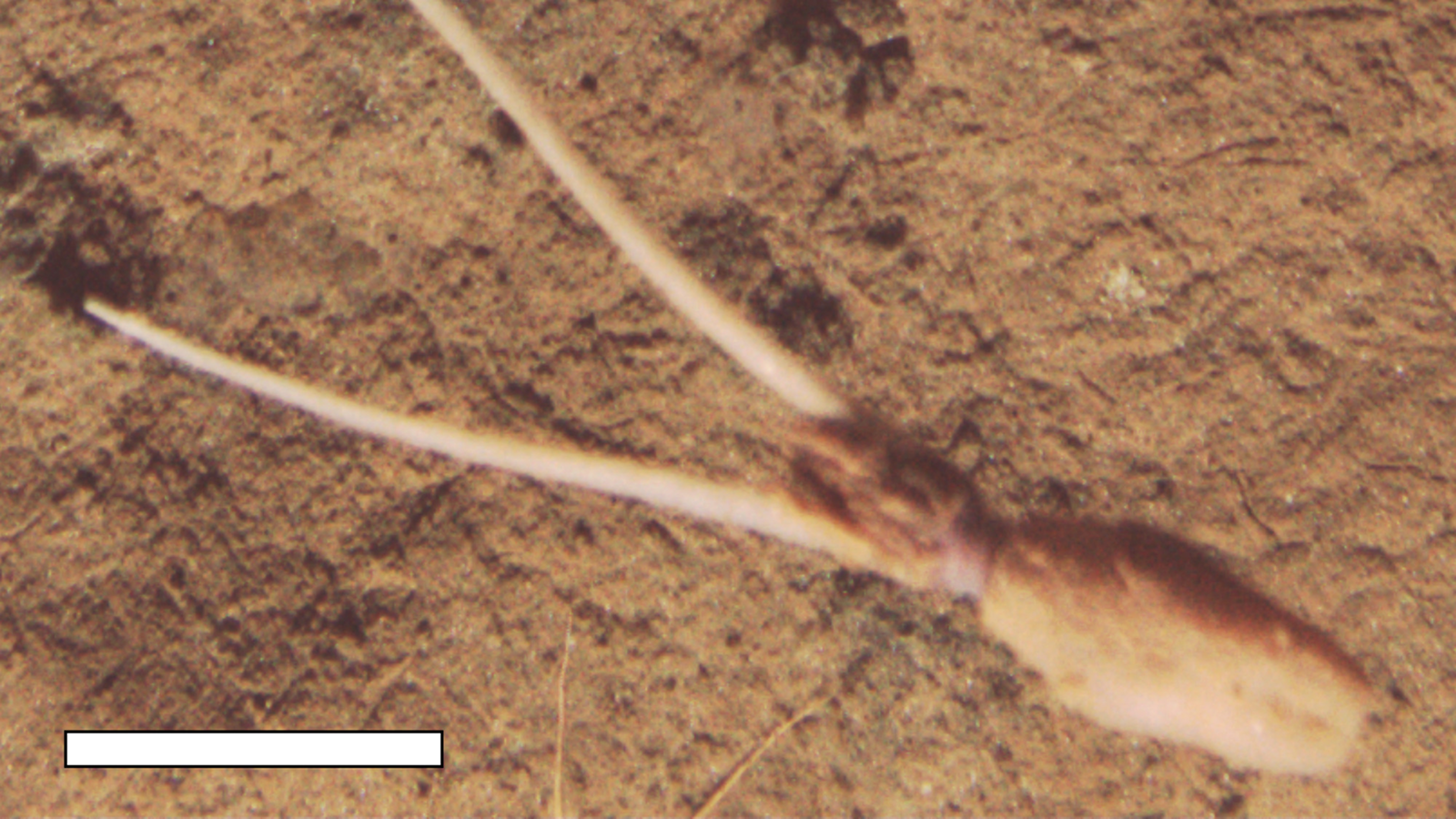Richard III Announcement Spurs Excitement, Skepticism

The announcement that the bones of English King Richard III have been identified "beyond reasonable doubt" has spurred excitement — and some skepticism — among the archaeological community.
"I'm really excited by it," said Lemont Dobson, a historian and archaeologist at the School of Public Service and Global Citizenship at Central Michigan University. "This is one of those things where people are talking about archaeology and real science, not pseudoscience on television."
On Twitter, "Richard III" was trending Monday morning, a fact that generated some amusement among users.
"Man, when's the last time 'Richard III' was trending? Tewkesbury?" wrote GristList editor Jess Zimmerman, referring to a 1471 battle in the War of the Roses in which a young Richard played a role. That ongoing civil war would take Richard III's life 14 years later, two years after his ascent to the throne.
But some scientists struck a more sober note, warning that ancient DNA analysis is subject to contamination, and grumbling that the results were revealed via press conference prior to peer-review by fellow researchers. [Gallery: The Search for Richard III]
"The DNA results presented today are too weak, as they stand, to support the claim that DNA is actually from Richard III," said Maria Avila, a computational biologist at the Center for GeoGenetics at the Natural History Museum of Denmark. "Perhaps more in-depth DNA analysis summed to the archaeological and osteological [bone analysis] results would make a round story."
DNA of a king
Get the world’s most fascinating discoveries delivered straight to your inbox.
University of Leicester archaeologists announced today (Feb. 4) that a skeleton found months before under a city council parking lot does indeed belong to the medieval king. The researchers suspected the bones might belong to Richard III, because they sported wounds consistent with the king's death in the 1485 Battle of Bosworth Field. Several wounds to the skull, in particular, were consistent with almost immediate death by either brain injury or blood loss.
The skeleton also exhibits a twisting of the spine known as scoliosis, which meshes with historical reports of Richard III as a "hunchback." (He wasn't actually a hunchback, the researchers point out — scoliosis may have made him look slightly lopsided, however.) The date of the bones and burial location also fit the Richard III identification.
For the University of Leicester team, however, the nail in the coffin of the identification was a DNA analysis that matched that of Michael Ibsen, a modern-day descendent of Richard III through the maternal line, along with DNA from another descendent on the maternal line who asked to be kept anonymous. The DNA used is mitochondrial DNA, which is contained in the part of the cell that transforms nutrients to energy; this type of DNA is passed down only through the maternal line.
Ancient DNA, however, is very susceptible to contamination, sparking some skepticism.
"Before being convinced of ANY aDNA study, it should be explicit that all possible cautions were taken to avoid potential contamination," Avila wrote in an email to LiveScience. "It is just part of the protocol." (aDNA refers to ancient DNA.)
Avila also warned that people could share mitochondrial DNA even if they didn't share a family tree. To be confident that Ibsen is related to the owner of the disinterred skeleton, the researchers must present statistics showing how common the DNA profile is in the United Kingdom, she said. Otherwise, the similarities between Ibsen's mitochondrial DNA and the skeleton's could be coincidental.
Avila noted that she doesn't necessarily disbelieve the team's conclusion that the skeleton is Richard III's, just that the DNA evidence isn't the strongest piece of the puzzle.
"It seems to me that osteological as well as archaeological evidence is stronger, however 'DNA evidence' sounds fancier so it looks like they used it as the hook to capture the attention of media," she said.
Announcing a discovery
Those caveats had some scientists wishing the Richard III team had published a peer-reviewed scientific paper (a process that can take months or more) before announcing their identification to the public. The Richard III team said today that they would submit their findings for peer-review and publication, though not before more media exposure. The BBC's Channel 4 will run a documentary on the archaeological hunt for Richard III and the discovery tonight. [Science of Death: 10 Tales from the Crypt & Beyond]
"I love the fact that there is so much excitement over Richard III discovery, but I'm also not keen on press-conferences for science," paleobiologist Victoria Herridge of the Natural History Museum London wrote on Twitter.
Without detailed methods and statistics, Herridge and other scientists complained, it's difficult to judge the veracity of the findings.
Not everyone criticized the University of Leicester's immediate announcement. The team avoided sensationalism, said Central Michigan University's Dobson.
"I think they went about it in probably the most rigorous way," Dobson told LiveScience. Criticisms of the press conference are "missing the point of this kind of discovery," he said, because public interest is huge.
"Whether there's a press conference or not, it's going to be covered by the media, because that character occupies a place in our cultural psyche," Dobson said. "In one sense, they are giving the public what the public demands, which is access to knowledge that would typically be restricted."
The responsibility of archaeologists, Dobson said, is to present that knowledge without cutting corners on scientific rigor.
Nor did the DNA results trigger universal skepticism, given the multiple clues consistent with the body being Richard III.
"It's an impressive undertaking that the University of Leicester has pulled off: Not only did they find the cemetery and the body, they confirmed through numerous lines of evidence that the body was likely that of Richard III," anthropologist Kristina Killgrove, a professor at the University of West Florida who was not involved in the study, told LiveScience.
Based on the research done in this case, Killgrove said, "I trust that they know what they're talking about and that it will stand up to peer review."
Follow Stephanie Pappas on Twitter @sipappas or LiveScience @livescience. We're also on Facebook & Google+.

Stephanie Pappas is a contributing writer for Live Science, covering topics ranging from geoscience to archaeology to the human brain and behavior. She was previously a senior writer for Live Science but is now a freelancer based in Denver, Colorado, and regularly contributes to Scientific American and The Monitor, the monthly magazine of the American Psychological Association. Stephanie received a bachelor's degree in psychology from the University of South Carolina and a graduate certificate in science communication from the University of California, Santa Cruz.




